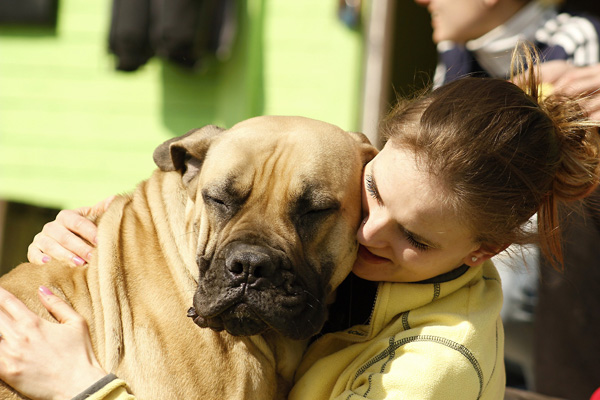Are you a dog parent? If so, it’s essential that you master certain basic factors that determine your relationship with your dog and can go a long way in training him effectively.
You’ve got a dog, so it’s time to begin training him. Right? Wait! First, it is absolutely essential that you build a loving bond with him. This loving bond will help you understand his needs and instincts. It also sets your dog up to have complete trust in you.
So … how do you build trust with your dog?
How To Bond With Your Dog Building a bond with your dog is the first and the most crucial step to successful dog training. As soon as you bring your dog home, do your best to develop a caring and loving relationship with him. This is essential to winning his trust and confidence.
When dogs are secure in the knowledge that they belong to the family, they are more likely to respond better to their owners’ training commands. Just like with any relationship, there must be mutual trust and respect between you and your dog.
Trust takes time to develop. And respect comes from defining boundaries and treating any breach of those boundaries with firmness and fairness.
Without enforceable limitations, respect can’t be developed. And when there is no respect, building a bond with your dog is almost impossible.
4 Golden Rules To Building A Relationship With Your Dog :
- Spend quality time together
- Take him out in the world and experience life together
- Establish and promote a level of mutual respect
- Develop a way of communicating to understand each other’s needs.
Building a bond with your dog will help you manage him better. It will also make your dog a calm, quiet, and extremely well-adjusted pet.
Love Your dog and He Will Love You back. Once you’re succesful in building a bond with your dog, you can rest assured that training him and teaching him new and clever tricks will be a cakewalk.
Learn how to bond with your dog with this free mini course.
How Your Dog Learns… Your dog’s learning period can be divided into five phases:
The Teaching Phase – This is the phase where you must physically demonstrate to your dog exactly what you want him to do.
The Practicing Phase – Practice makes perfect. Once a lesson is learnt, practice with your dog what you have just taught him.
The Generalizing Phase – Here you continue practicing with your dog in different locations and in an environment with a few distractions. You can take your dog out for a walk, or to a nearby park and command him to practice whatever you’ve taught him.
Practice the learned lessons in multiple locations. It’s best if there are some small distractions, as they will help him learn and retain lessons better.
The Testing Phase – Once you’re sure that your dog has achieved almost 90% success, meaning he responds correctly almost every time you give a command, it’s time to start testing his accuracy in newer locations with a lot of distractions.
Example: Take him to the local shopping mall and ask him to obey your command. He may not come up with the correct response the very first time you do this, but you must not lose hope.
The idea is to test your dog to see how he responds in new environments. Set up a situation where you are in control of the environment and your dog.
There are only 2 possibilities: 1) Your dog succeeds!!! (Trumpets please!)
2) If your dog fails, re-examine the situation. Review and/or change your training. Then try testing again.
Keep on testing until he succeeds. Follow the rule of the 3 Ps – Patience, Persistence, Praise.
The Internalizing Phase – Finally, you’re ready for the extremely rewarding phase where your dog does everything he is taught to do even without your commands.
Remember:
Never scold your dog if he fails. It’s not his fault. You have failed as a trainer! (But don’t beat yourself up. Just keep training.)
You must be patient and persistent for your efforts to show rewards.
Appreciate and love your dog when he does it right! A little encouragement will work wonders for your dog.
Dog Training is easy when you do it right. Learn how to train your dog better with this free mini course.
By permission, this article is a derivative of an article copyright (c) 2009 TrainPetDog.com.
And here’s another thing … a lot of interesting things are going to happen whiile you’re training your dog. Why not keep notes on it? Better yet, shoot some dog training videos. You just may reach a point where you know you can help others by sharing what you’ve learned. We’re here to help you do that when you’re ready.
Pawsitively, Chiwah Carol Slater The Pet Story Passionista Founder, PetWrites.com, AWriteToKnow.com Support Desk: petwrites@gmail.com
NOTE: This post may contain affiliate links, and (at no cost to you) I may receive a small commission on your purchase. For example, the top-shelf Dog Training Videos available at: http://www.TrainPetDog.com/h/Chiwah/ With these, you’ll be free of the need to scour the Internet for dog training classes in your area.



